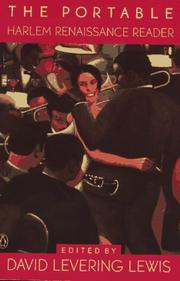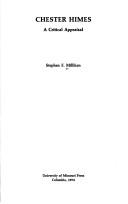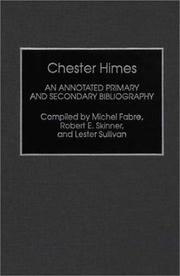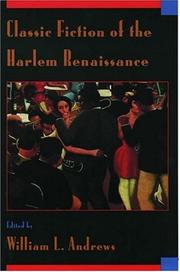| Listing 1 - 10 of 13 | << page >> |
Sort by
|
Book
ISBN: 9780349017846 Year: 2023 Publisher: London : Virago Press,
Abstract | Keywords | Export | Availability | Bookmark
 Loading...
Loading...Choose an application
- Reference Manager
- EndNote
- RefWorks (Direct export to RefWorks)
What is a child's body worth when it is big, Black and female - when it is under constant demand to be something other than what it naturally is? In Mecca Jamilah Sullivan's achingly beautiful coming-of-age debut novel, "Big Girl," this body carries the weight of an entire neighborhood.When the book opens in the late 1980s, Malaya is an 8-year-old girl living with her parents in Harlem, burdened with a figure others consider ugly and a home life riddled with tension. Her mother, Nyela, tries and often fails to control her own Black body - for the sake of a notion of respectability and desirability that's been passed down from her mother and grandmother - and she drags Malaya to Weight Watchers meetings that only make Malaya hungrier. Meanwhile Malaya's father, Percy, dotes on her and resists Nyela's injunctions to stop feeding her.Sullivan portrays Percy tenderly, as though his entire being is rooted in the resentment of hunger of any kind. Having survived an impoverished childhood in the Harlem projects, where he experienced involuntary starvation firsthand, he has moved Nyela and Malaya into a crumbling brownstone in his home neighborhood, which appears to be poised for change. Treasuring the full-bodied women in his family as evidence of how far he has come from his youth, Percy blinds himself to the health risks of Malaya's overindulgence. As his love causes Malaya harm - a doctor says she is "morbidly obese" - the household begins to crumble like the walls and community around them.
Afro-Américains. --- African Americans --- Fiction --- New York (N.Y.) --- Quartier de Harlem --- Fiction.

ISBN: 9780140170368 Year: 1995 Publisher: New York : Penguin Books,
Abstract | Keywords | Export | Availability | Bookmark
 Loading...
Loading...Choose an application
- Reference Manager
- EndNote
- RefWorks (Direct export to RefWorks)
HARLEM RENAISSANCE --- Littérature américaine --- LITTERATURE AMERICAINE --- New York (N.Y.) --- Anthologies --- Auteurs noirs américains --- 20E SIECLE --- Quartier de Harlem --- HARLEM RENAISSANCE --- Littérature américaine --- LITTERATURE AMERICAINE --- New York (N.Y.) --- Anthologies --- Auteurs noirs américains --- Anthologies --- 20E SIECLE --- HISTOIRE ET CRITIQUE --- Quartier de Harlem --- Dans la littérature

ISBN: 0826201903 Year: 1976 Publisher: Columbia : University of Missouri press,
Abstract | Keywords | Export | Availability | Bookmark
 Loading...
Loading...Choose an application
- Reference Manager
- EndNote
- RefWorks (Direct export to RefWorks)
Himes, Chester B., --- Himes, Chester --- Criticism and interpretation --- Himes, Chester (1909-1984) --- Roman policier américain --- New York (N.Y.) --- Critique et interprétation --- Histoire et critique --- Quartier de Harlem --- Dans la littérature
Book
ISBN: 9782735129560 273512956X Year: 2023 Publisher: Paris : Éditions de la Maison des sciences de l'homme,
Abstract | Keywords | Export | Availability | Bookmark
 Loading...
Loading...Choose an application
- Reference Manager
- EndNote
- RefWorks (Direct export to RefWorks)
""Les Noirs seront-ils capables de se maintenir à Harlem ?", se demandait James Weldon Johnson en 1925. Ce livre offre, près d'un siècle plus tard, une réponse à sa question. S'il fut la capitale de l'Amérique noire, Harlem ne sera bientôt plus un quartier noir. Peut-être ne l'est-il déjà plus. Sa reconquête, entamée dans les années 1980, s'est accélérée à la fin des années 2000, soutenue par les gouvernements municipaux successifs. La gentrification de Harlem résulte en effet largement des politiques publiques volontaristes qui y ont été déployées. La présentation de plusieurs conflits locaux met en évidence les tensions qui ont émergé entre les habitants, la municipalité et les acteurs privés. Malgré leur longue mobilisation, les habitants n'ont pourtant pas réussi à empêcher le déplacement des plus pauvres et à faire valoir leur droit à la ville. Charlotte Recoquillon, en faisant l'histoire de la gentrification de Harlem, contribue à documenter les modalités de mise en œuvre des politiques urbaines néolibérales, du racisme systémique et à enrichir la compréhension des dynamiques historiques de subjugation des espaces et des populations noires aux États-Unis."--Page 4 of cover.
Urban renewal --- Housing policy --- Harlem (New York, N.Y.) --- Embourgeoisement (urbanisme) --- Noirs --- Racisme --- Quartier de Harlem --- urbanisme --- politique de la ville --- racisme --- New York --- Gentrification --- History. --- Social conditions. --- Race relations.
Book
ISBN: 9781619258228 Year: 2015 Publisher: Ipswich : Amenia : Salem Press ; Grey House Publishing,
Abstract | Keywords | Export | Availability | Bookmark
 Loading...
Loading...Choose an application
- Reference Manager
- EndNote
- RefWorks (Direct export to RefWorks)
Critical Insights: Harlem Renaissance presents the period of unparallel growth in art and literature from the African American Community, also known as the Harlem Renaissance. With its production of key authors, from Langston Hughes to Claude McKay, among others, the Harlem Renaissance saw the rise in creative endeavors by black artists and writers eager to celebrate the unique characteristics of black life and to challenge the institutionalized racial hierarchy pervasive within twentieth-century American society. These creative thinkers, certainly intellectuals in their own right, used their poetry, short stories, novels, and plays as a vehicle to critique the longstanding issues within society that limited socioeconomic mobility for blacks, while perpetuating startling stereotypes about a community too long oppressed. Because of its undeniable impact in shaping the American cultural imagination regarding blacks and on the larger American literary canon, the Harlem Renaissance has since been heavily studied as the most significant period of artistic as well as cultural development the African American community has ever experienced.
American literature --- African American authors --- Harlem Renaissance. --- Littérature américaine --- Harlem Renaissance. --- Vie intellectuelle --- African American authors --- History and criticism. --- Auteurs noirs américains --- Histoire et critique. --- Quartier de Harlem --- Harlem (New York, N.Y.) --- Intellectual life

ISBN: 0313283966 Year: 1992 Volume: 30 Publisher: Westport, Conn. Greenwood Press
Abstract | Keywords | Export | Availability | Bookmark
 Loading...
Loading...Choose an application
- Reference Manager
- EndNote
- RefWorks (Direct export to RefWorks)
American literature --- Himes, Chester --- Bibliography --- Detective and mystery stories [American ] --- Harlem (New York, N.Y.) in literature --- HIMES (CHESTER), 1909-1984 --- BIBLIOGRAPHIES --- Detective and mystery stories, American --- African American police in literature. --- Himes, Chester B., --- Himes, Chester, --- Harlem (New York, N.Y.) --- New York (N.Y.) --- In literature --- Quartier de Harlem --- Dans la littérature.
Book
Year: 1990 Publisher: Cambridge New York, N.Y. : Cambridge University Press,
Abstract | Keywords | Export | Availability | Bookmark
 Loading...
Loading...Choose an application
- Reference Manager
- EndNote
- RefWorks (Direct export to RefWorks)
American literature --- American literature --- American literature --- African Americans --- Modernism (Literature) --- African Americans in literature. --- Harlem Renaissance. --- Noirs --- Littérature américaine --- New York (N.Y.) --- New York (N.Y.) --- Littérature américaine --- Littérature américaine --- Noirs américains --- Modernisme (littérature) --- African American authors --- History and criticism. --- History and criticism. --- History and criticism. --- Intellectual life. --- États-Unis --- New York (N.Y.) --- Quartier de Harlem --- Dans la littérature --- 20e siècle --- Auteurs noirs américains --- Dans la littérature --- États-Unis --- Harlem (New York, N.Y.) --- New York (N.Y.) --- In literature. --- In literature. --- Noirs --- Littérature américaine --- New York (N.Y.) --- New York (N.Y.) --- Littérature américaine --- Littérature américaine --- Noirs américains --- Modernisme (littérature) --- États-Unis --- New York (N.Y.) --- Vie intellectuelle --- New York (N.Y.) --- Histoire et critique --- Quartier de Harlem --- Vie intellectuelle --- 20e siècle --- Dans la littérature --- 20e siècle --- Histoire et critique --- Auteurs noirs américains --- Histoire et critique --- Dans la littérature --- États-Unis

ISBN: 019508196X Year: 1994 Publisher: New York Oxford University Press
Abstract | Keywords | Export | Availability | Bookmark
 Loading...
Loading...Choose an application
- Reference Manager
- EndNote
- RefWorks (Direct export to RefWorks)
Sociology of literature --- Fiction --- American literature --- anno 1900-1999 --- American fiction --- African Americans --- Harlem Renaissance. --- African American authors. --- Harlem (New York, N.Y.) --- Écrivains noirs américains --- Roman américain --- Harlem Renaissance --- New York (N.Y.) --- Anthologies --- Auteurs noirs américains --- 20e siècle --- Quartier de Harlem --- Dans la littérature --- Écrivains noirs américains --- Roman américain --- Auteurs noirs américains --- 20e siècle --- Dans la littérature
Book
ISBN: 0912469099 Year: 1991 Publisher: Dover, Mass. : Majority Press,
Abstract | Keywords | Export | Availability | Bookmark
 Loading...
Loading...Choose an application
- Reference Manager
- EndNote
- RefWorks (Direct export to RefWorks)
American literature --- African American arts --- African Americans --- Harlem Renaissance. --- Black people --- Black nationalism. --- Garvey, Marcus Moziah (1887-1940) --- Littérature américaine --- Harlem Renaissance --- Nationalisme noir --- New York (N.Y.) --- African American authors. --- African American authors --- History and criticism. --- Race identity. --- Auteurs noirs américains --- Quartier de Harlem --- Garvey, Marcus, --- Harlem (New York, N.Y.) --- Intellectual life --- Vie intellectuelle --- 20e siècle --- Littérature américaine --- Auteurs noirs américains --- 20e siècle
Book
ISBN: 9782757869611 2757869612 Year: 2017 Volume: 835 Publisher: [Paris] : Éditions du Seuil,
Abstract | Keywords | Export | Availability | Bookmark
 Loading...
Loading...Choose an application
- Reference Manager
- EndNote
- RefWorks (Direct export to RefWorks)
Pour la première fois, un anthropologue est parvenu à gagner la confiance et l’amitié de vendeurs de drogue de East Harlem. Pendant cinq ans, l’auteur a observé, enregistré, photographié, dans toutes ses facettes, la vie d’une trentaine de dealers portoricains. Il nous livre ici le matériau et le résultat de cette recherche : nous voyons de près, dans ses détails les plus intimes, la vie quotidienne des habitants de ces quartiers à risque : pratiques régulières du crime, du viol, mais aussi force de l’amitié et rêves enfantins de gloire. Ce livre compte une contribution théorique originale et nous aide à comprendre la relation entre la culture, l’économie et le déterminisme social, à repenser la question de la responsabilité individuelle.
Crack (Drug) --- Drug traffic --- Hispanic Americans --- African Americans --- Informal sector (Economics) --- Marginality, Social --- Drug use --- Social conditions --- East Harlem (New York, N.Y.) --- Economic conditions --- Drogues et criminalité --- Crack --- Exclusion sociale --- Conditions sociales --- Quartier de Harlem --- Social aspects --- Crack (Drug) - New York (State) - New York --- Drug traffic - New York (State) - New York --- Hispanic Americans - Drug use - New York (State) - New York --- Hispanic Americans - New York (State) - New York - Social conditions --- African Americans - Drug use - New York (State) - New York --- Informal sector (Economics) - New York (State) - New York --- Marginality, Social - New York (State) - New York --- East Harlem (New York, N.Y.) - Economic conditions --- East Harlem (New York, N.Y.) - Social conditions
| Listing 1 - 10 of 13 | << page >> |
Sort by
|

 Search
Search Feedback
Feedback About UniCat
About UniCat  Help
Help News
News